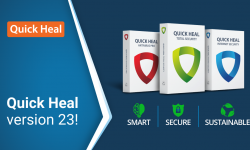OS X Lion: What’s new in Security
Once you are done with the online installation experience and seen the upside-down mouse gestures and all the other bling that comes as part of OS X Lion, it is time to look at what has changed from the security point of view. Lion provides some significant security improvements.

An important note: Lion is just a day old now so a lot of these features haven’t exactly been tested yet by the large masses of users.
Address Space Layout Randomization (ASLR)
ASLR will make exploiting vulnerabilities significantly harder. In itself, it does not prevent any vulnerabilities. Snow Leopard introduced ASLR, but limited it to libraries. ASLR on Snow Leopard also missed randomizing the stack and the heap.
Automatic Security Updates
In Snow Leopard, like in most other operating systems, the user was told about updates but had to manually approve/install them. In Lion, this is all going to happen behind the scenes. We will have to see how well this works as “automatic” or “unmanaged” updates may break incompatible applications.
Sandboxing
Sandboxing is supposed to limit how individual applications can affect each other and the underlying system. For Safari, in particular, it will be interesting to see how well this works and if it prevents exploitation of vulnerabilities. Safari itself is split into different parts and javascript or plugins will run in their own sandbox.
Encrypted Backups
Time machine backups can now be encrypted.
Air Drop
Air Drop sounds a bit dangerous and we will have to revisit this protocol. It essentially allows setting up quick peer-to-peer networks to exchange files. However, the file transfer is TLS encrypted according to Apple and authenticated using the users Apple ID (which has always been available as a client certificate). It also appears to set up appropriate firewall rules. Looks like they did think about the important issues, but this is very much a topic that needs further testing.
File Vault 2
The original file vault feature in Snow Leopard only encrypted the users home directory. It was rather clunky and didn’t interoperate well with time machine. File Vault 2 implements full disk encryption. Furthermore, a number of additional features are implemented. For example, one can instantly “wipe” the disk by deleting the key. If a user is afraid of losing the key, the key can be escrowed with Apple. Initial performance tests have been pretty good.
Update: After experimenting with File Vault 2, we found that it can only be used if the installer was able to create a recovery partition, which it did not do in my case. Also, File Vault 2 is encrypting the partition, not the entire disk like other products (e.g. PGP).
Privacy
Lion uses refined privacy preferences. In particular, limiting the access to location information.
Apple ID for authentiation
We’re not sure about Air Drop, but other authentication features leverage your Apple ID. As you sign up for an Apple ID, Apple will create a client certificate for you that you can use to authenticate for file sharing, iChat and Screen Sharing. The certificate has existed in the past and was used in iChat. But now it is used by other features of the OS.
For the complete Feature List visit the URL: https://www.apple.com/macosx/whats-new/features.html

No Comments, Be The First!